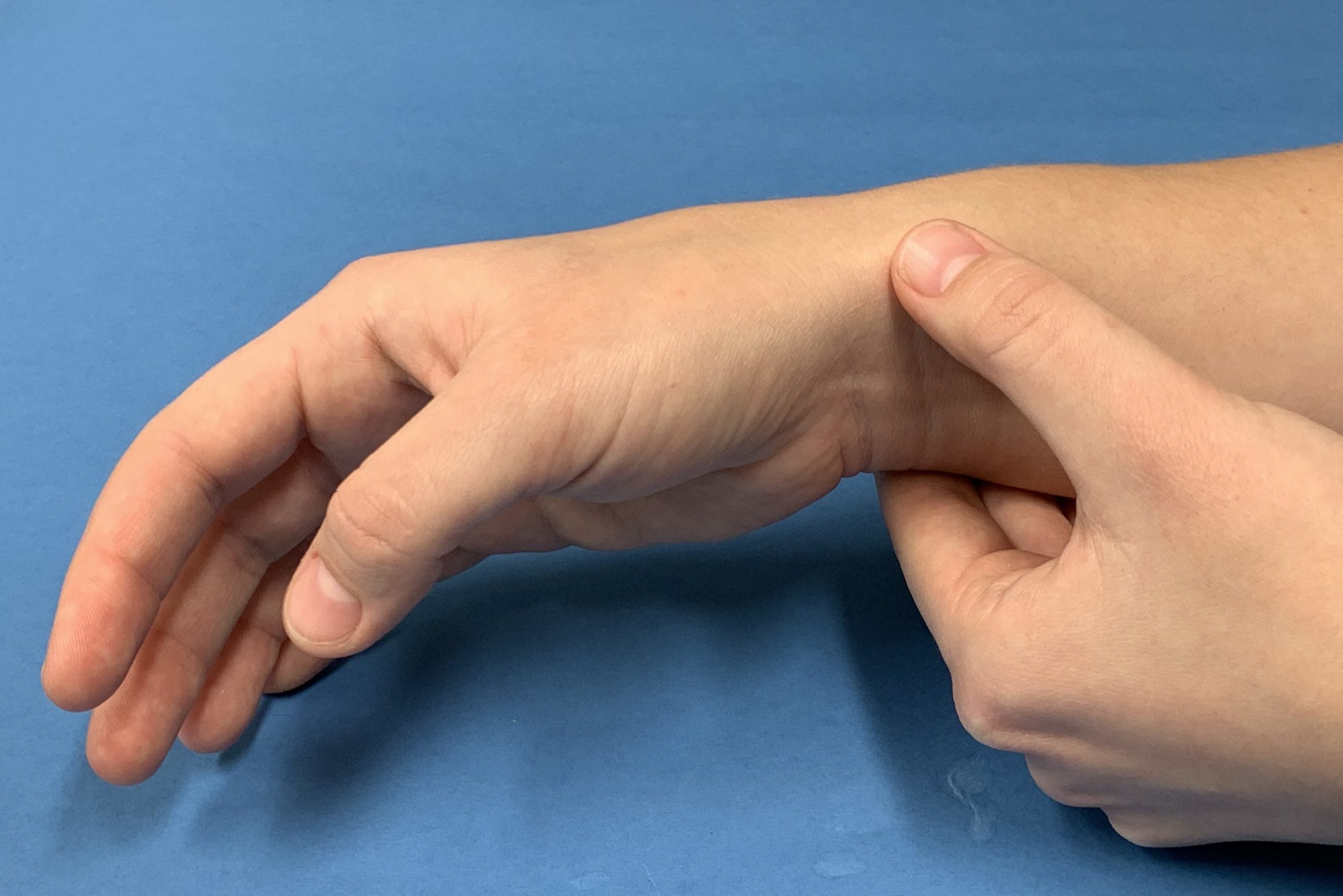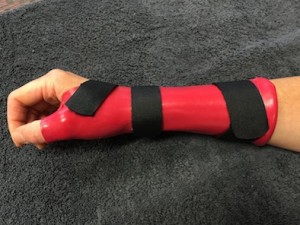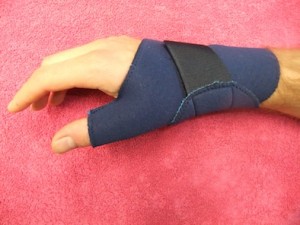
What causes DeQuervain’s disease?
De Quervains disease is caused by narrowing of the tendon sheath around two tendons that control the thumb. It is caused by repetitive activities, sustained positioning and occasionally by impact. It is most common in new mothers and middle aged women performing unaccustomed activities.
Symptoms
Symptoms include pain and crepitus when moving the thumb and wrist, and can be aggravated by holding and picking up a baby, grasping sheets in bed, carrying plates, pulling up trousers, turning keys, and writing. Symptoms can be mild to severe.
How is DeQuervains disease treated?
Education will be provided to assist in determining how to perform thumb movements with aggravating symptoms. This will include discussion of ergonomic setup and managing lifting. Massage, rest, heat or cold can be helpful.
Depending on the severity of your symptoms, your treatment may also include:
Splints/Supports
Various styles of splints are available and your therapist will help you determine which is most suitable, depending on the extent of your pain and irritation. Your splint will diminish in size and rigidity as your symptoms improve.


Exercises
Gentle thumb exercises should maintain mobility without causing pain or irritation of symptoms.


Nerve glides can assist in mobilising structures on the side of the wrist


Your hand therapist will create a unique treatment plan to address and help relieve your current symptoms. The goal is always to both give you relief from any pain and discomfort, create optimal conditions for the tissues to recover, and then teach you how to put the right measures in place to reduce the likelihood of your condition recurring.
